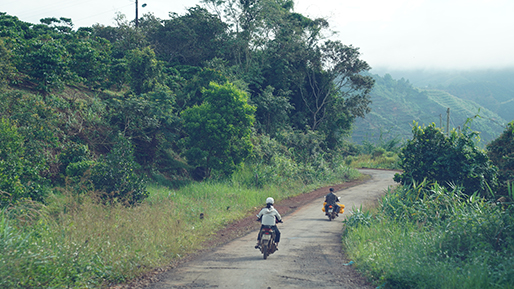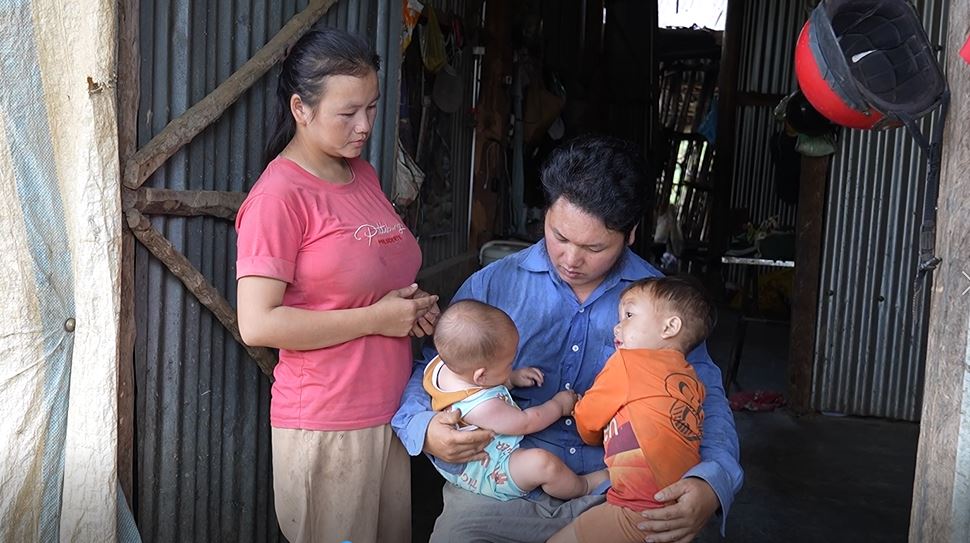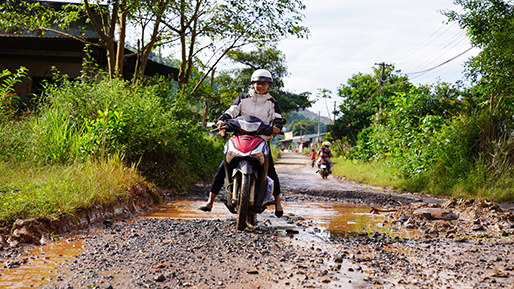During the COVID-19 pandemic, important routine immunization work in many locations across Viet Nam was severely disrupted. Health centers closed, families were locked down and imports and exports of vials, syringes and other medical supplies for vaccinations were interrupted.
Some communities were more affected than others though, especially those in more remote and hard to reach areas. In the Central Highlands, the rate of immunization was below the national coverage target, especially concerning for outbreak-prone diseases, such as measles and diphtheria, and with several other factors also contributing to the lower-than-average immunization rate.
Dak Nong, a mountainous province located in the Central Highlands region, is home to more than 40 different ethnic minority groups. Living in separate villages and hamlets, many far from district and commune health stations, bringing children in for routine immunizations is not always possible for parents and caregivers. In addition, limited information about the benefits of immunization, some fear of possible side effects and a concern about farm work being affected, have all contributed to lower immunization uptake.

Photo Credit: © WHO / Viet Nam
In response to some of these challenges, in 2023, WHO partnered with the Tay Nguyen Institute of Hygiene and Epidemiology (TIHE) in some of the more disadvantaged communes of Dak Nong to improve immunization coverage and provide catch-up vaccinations for children who missed doses during the pandemic, through the implementation of the ‘outreach vaccination’ program. The program is also contributing to ‘reaching the unreached’ and reducing inequalities in accessing health services for people in remote and hard-to-reach areas.

Outreach vaccination point in Dak Som commune, Dak Nong province Photo Credit: © WHO / Viet Nam
“Before this program, we could only vaccinate 100 to 150 children a month. Since implementing the outreach vaccination program at villages, we have seen an increase in vaccination rates with around 200 to 300 children vaccinated per month,” said Ms H’Tuy, an assistant doctor working at Dak Som commune health station in Dak Nong province.
With WHO and TIHE support, Dr H’Tuy attended the outreach vaccination program training and learned more about how to manage patients and make reports and improved her professional capacity for screening and pre- and post-vaccination management. Now, instead of just monthly immunization days at the commune health station, outreach vaccination is being conducted several times a month in different places, making life-saving immunization more accessible for all, as well as providing opportunities for healthcare workers to share helpful facts with parents and caregivers about the benefits of immunization.
.jpg?sfvrsn=ae8a7d6f_7)
Dr H’Tuy providing pre-vaccination screening to children Photo Credit: © WHO / Viet Nam
“My first child was not vaccinated, because at that time, I did not know what a vaccine was. I mainly focused on earning money for food and clothes for my child,” shared Mr Giang A Cu, a father of three in Dak Som commune. “As for his health, as long as he was not sick, I considered him healthy.”

Mr Giang A Cu and his family living in Dak Som commune, Dak Nong province Photo Credit: © WHO / Viet Nam
When Mr Cu had his first child, there were no paved roads and Mr Cu’s family lived 17 kilometers from the local health station. Fear of possible vaccine side effects like fever also made him hesitant to bring his child in for vaccination, as staying at home for a few days to care for a child would affect his farming work and create tension within the family.
Now though, thanks to the outreach vaccination program and better road conditions, commune health station staff can travel to villages and hamlets and get children like Mr Cu’s vaccinated. “The medical staff explained that fever can be a normal vaccine reaction. I feel assured. Now my two other children have been fully vaccinated with different vaccines including TB as the first shot; then OPV, HIB, and encephalitis, measles, whooping cough and tetanus,” said Mr Cu. “I was never vaccinated in my whole life, so that’s what I regret. I can’t leave my children like that. I must remember the vaccination schedule and get them fully vaccinated so when they grow up, they won’t blame me for not getting them vaccinated.”

Dr H’Tuy on her way to a vaccination point Photo Credit: © WHO / Viet Nam
Despite the importance and investment in the program, geography and weather conditions, can still make things challenging. Health staff of Dak Som commune have to travel five to six hundred kilometers every month for the activities no matter the weather. “Even though it is hard and so difficult, we are aware that every dose of vaccine to children is a hope – a way to prevent diseases for them. I am very happy because with the program implemented, it will help prevent children from getting sick, as such to reduce the burden of disease and our country will have a healthier next generation,” Dr H’Tuy proudly said. “I hope that WHO will continue to support the outreach vaccination program so that we can perform our tasks better and more children will be fully vaccinated.”
With important donor support from the European Union and the Australian Government, Dak Nong province has successfully extended outreach activities to 16 communes across five districts, and by late November 2023, the program had reached more than 4,400 children. The success of the program has reinforced the commitment of local authorities to continue these efforts to ‘reach the unreached’ and is helping to build a stronger and healthier future generation of Vietnamese.
